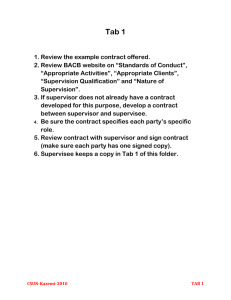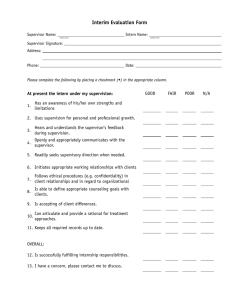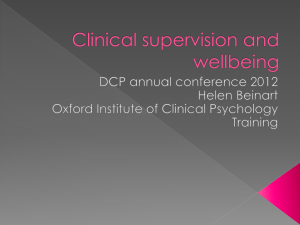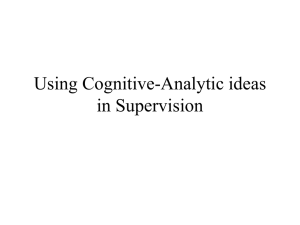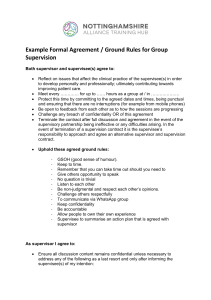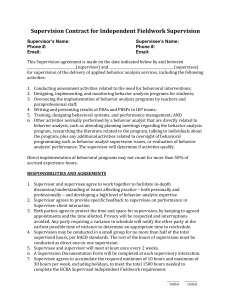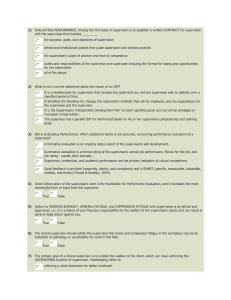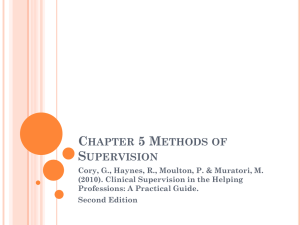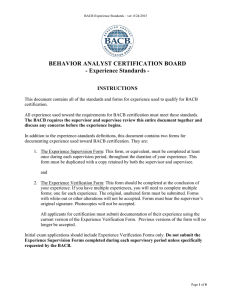Chapters 5, 6, 7
advertisement
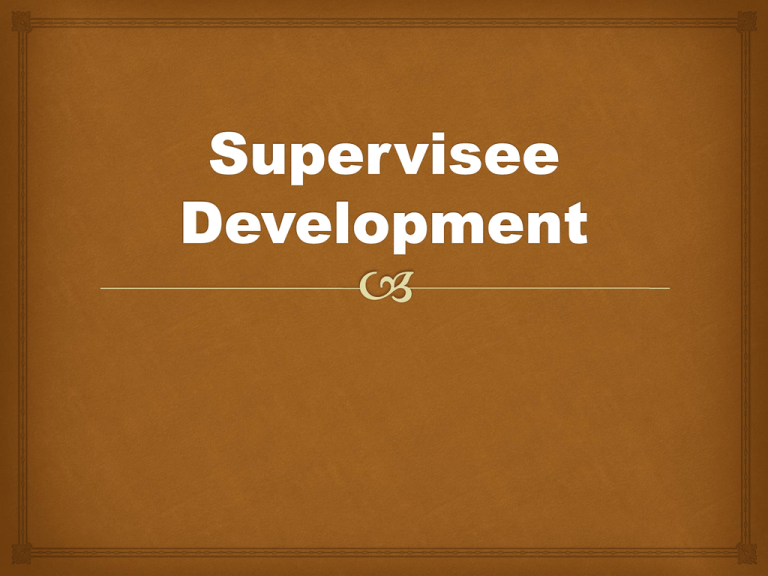
Learning to Communicate Effectively When working with children, staff learns to communicate with a variety of people for different purposes: Building relationships with colleagues Plan curriculum with the staff members to support children’s learning Participate in the supervisory process with head teachers or directors Communicating with parents about child development Interact with professionals (doctors, social workers, psychologists) Becoming a SelfConfident Teacher Beginner teachers need time to become more confident in the work setting: Communicating with parents Leading group time Less depended on the supervisor Experience, staff development, and training can have an exciting effect on the self-confidence of caregivers Understanding Children Working with children overtime, deepens caregivers understanding of child development: Milestones of development Address important problems that children face (delays in language or child abuse) Understanding Oneself While working with children and interacting with parents and other professionals, supervisees reflect about their own growth and development: Some change their own attitudes toward learning and disciplining children Attend workshops and complete college courses Having support from a supervisor, stimulates the staff to think what they need to do to improve Respecting Others Respect and appreciate other cultures Value other human being in their daily work Attend trainings to learn appreciate the cultural and ethnic differences and better communicate with parents Gaining Satisfaction and Stimulation from Professional Growth Increase staff competence Broaden their roles and responsibilities based on their personal interests (playground or classroom design or child advocacy work) Staff who work in the nurturing and stimulated environments, remain in their jobs despite the low pay Building a Philosophy of Learning With experience, teachers tend to develop strong points of view about how children learn best: How children should be handled How a play area should be designed How children learn best Valuing Good Supervision Part-time volunteers do not expect to be trained, observed, or evaluated Full-time staff have high expectations for supervisors and can be critical when acceptable supervision is not provided Staff value a supervisor who is willing to spend time with them, to listen to their thoughts, feelings, and concerns Staff appreciate constructive criticism Staff appreciate supervisors who engage them in group problem-solving activities, seek their input in decision making The Developmental Dynamic at Work When a problem arise with the supervisee, consider his/her developmental level to determine the most appropriate supervisory strategy. In case of a 66-yearold who is great with children, except in areas of discipline. The Supervisory Plan Meet with the supervisee Make her feel special person and recognize the good work she has been doing Going over routines and clarifying her role working with children Immediately address the issue Take time to observe the supervisee in the classroom Hold individual conferences with the person on a regular basis to get to know him/her Provide feedback to him/her from observations to begin to reflect on her behavior in disciplining children Provide monthly training sessions with others to deal with child care techniques and provide them with opportunities to share their thoughts Invite this person to staff meetings so she/he feel part of the program and learn from the staff The Five Stages of Clinical Supervision Clinical supervision is an ongoing professional development of staff members Stage 1: Pre-observation Conference Opportunity to begin to establish positive working relationships with each other Discuss concerns Review activity plans for children Make plans for observations and establish a time for the post-observation conference Stage 2: Observation Supervisor or peer may observe teachers at work during formal/informal lessons with children To link between the plans made during stage 1 and actual practice Stage 3: Analysis and Strategy Give immediate feedback Observed events are analyzed in terms of concerns and strategies are formulated Stage 4: Supervision Conference Discuss strategies for improvement Offer specific help Plan for the next observation Stage 5: Post conference Analysis Self-improvement for supervisors and staff members Assess the nature of communication during the conference The role that each individual played Progress was made on the issues discussed Modes of Communication Small- and Large-group meetings Hallway conversations In-house newsletter Internal memos E-mail Staff bulletin board Voicemail Text Messaging Website, Twitter, or Facebook Daily message log Coaching to Connect Curriculum, Assessment, and Teaching Observe Understand assessment choices Reflect Make meaning of documentation Develop Curriculum plan Apply To teaching strategies Evaluate Celebrate a project
